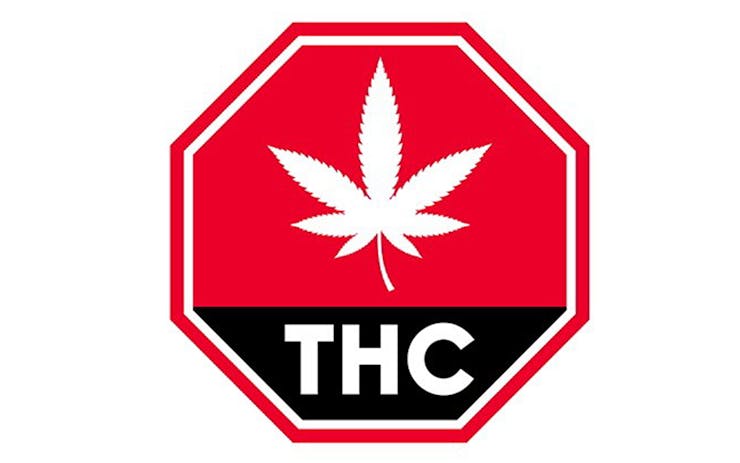Health Canada today introduced plans for the packaging and labelling of cannabis. The proposed regulations are intended to “minimize the appeal of cannabis to children and youth, protect against accidental consumption, and help inform consumers of the risks and harms of cannabis use.”
Each package label must include a cannabis symbol, mandatory health warnings, and information about the THC and CBD content.
The proposed measures stipulate that each package label must be a single, uniform colour and include mandatory health warnings, information about the THC and CBD content, and a “cannabis symbol”—in Canada’s case, that means a bright red stop sign emblazoned with a cannabis leaf.
The packaging can include just one other brand element (slogan, logo etc.) in addition to the brand name and no other images or graphics. It also has to be a uniform colour, and that colour cannot be fluorescent or metallic. Coating and inserts are prohibited.
These strict measures were introduced following a 60-day consultation with
stakeholders, law enforcement experts, governments, patient advocates and
other Canadians.
In a media briefing this afternoon, a government spokesperson said regulations governing marketing and promotional activities should not target children and youth and should be in line with those in the Tobacco Act. The government’s stated priority is to make the product unappealing to young Canadians.
The spokesperson added that the health warnings are based on “an exhaustive review of scientific evidence and consultation with various experts in the field. We have been thorough in how we arrived at these conclusions,” he said.
The government's stated priority is to make the product unappealing to young Canadians.
In a statement, Health Minister Ginette Petitpas Taylor said the government is taking a public health approach to legalizing and regulating cannabis and is committed to keeping cannabis out of the hands of children and youth.
“Plain packaging and labelling for cannabis products” is meant to ensure that
“Canadians have the best information to make informed choices regarding
the use of cannabis,” added Dr. Theresa Tam, Canada’s chief public health officer
These regulations were proposed despite the fact that, for the past year, Canadian cannabis producers have been calling for branding and marketing regulations to be more in line with those governing the sale of beer, wine and liquor, which are far less restrictive.
“There are many ways for us to connect with consumers, and communicate
our brand story and vision beyond the packaging of our product,” says
Lorilynn McCorrister, co-founder of Weedbox, a cannabis accessories retailer.
“We aim to safely supply the best cannabis products to consumers and feel
these regulations would not be an obstacle.”
McCorrister said she understands the rationale behind the proposed
regulations — to keep cannabis out of the hands of underage consumers —
but added that she hopes the market will “allow for more creativity” as it
matures.
Finalized cannabis packaging and labelling regulations will be released only after the Cannabis Act is passed into law. The regulations will apply to
recreational cannabis right away and will apply to medical cannabis six
months later.






